Mastering the Pickleball Serve tips for a Winning Start
Mastering the art of the pickleball serve can transform your game from good to exceptional, yet many enthusiasts overlook its strategic significance. Imagine standing at the baseline, paddle in hand, with the power to set the tone for each point. The serve in pickleball isn’t just about getting the ball over the net; it’s the opening gambit in a chess match that unfolds at a brisk, dynamic pace. This article delves deep into Pickleball serve tips to elevate your initial strike, blending precision with strategy. Whether you’re a beginner aiming to refine your technique or an intermediate player looking to gain a competitive edge, these insights will empower you to serve with confidence and tact. Join us as we explore innovative ways to enhance your serve, turning a routine action into a game-changing skill.
Understanding the Basics of Pickleball Serving
Service Rules
Before delving into techniques and strategies, it’s essential to understand the service rules in pickleball. According to the USA Pickleball Association (USAPA) rulebook, the guidelines for serving are straightforward yet crucial for a legal serve:
- Underhand Motion: The serve must be made with an underhand stroke, and the paddle must contact the ball below the server’s waist.
- Foot Position: At least one foot must remain behind the baseline at the moment of the serve.
- Service Box Target: The serve must be directed diagonally across the court into the opponent’s service box.
- Single Attempt: Unlike tennis, pickleball allows only one serve attempt. If the server misses or commits a fault, the serve passes to the opponent.
These rules are designed to maintain fairness and promote rally play, rather than allowing overpowering serves to dominate the game.
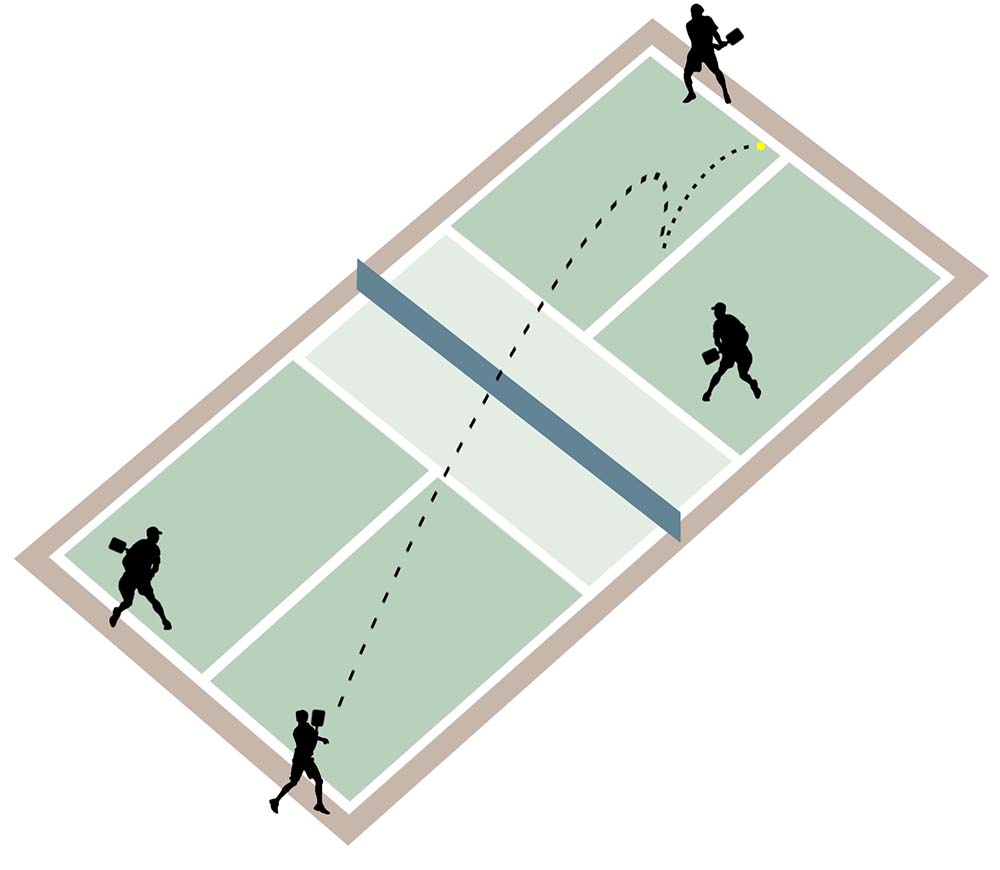
Foot Placement for a Legal Serve
Proper foot placement is fundamental for a legal and effective serve. Imagine your feet as the foundation of a building; if the foundation is shaky, the entire structure becomes unstable. Similarly, incorrect foot placement can lead to illegal serves and negatively impact your serve’s effectiveness.
- Behind the Baseline: Ensure that at least one of your feet stays behind the baseline until you make contact with the ball. This avoids foot faults.
- Side Stance: Position your feet in a staggered stance, with the non-dominant foot slightly ahead of the dominant one. This creates a stable base for a controlled serve.
- Non-Dominant Foot Placement: Point your non-dominant foot towards the target area (diagonal service box). This helps in aligning your body and aids in a more accurate serve.
- Flexibility and Balance: Maintain a slight bend in your knees and distribute your weight evenly to ensure flexibility and balance, preparing for any follow-through movements.
Grip Techniques for Your Paddle
The grip is where the serve begins and may well dictate its success or failure. Different grip styles can influence the type of serve you can execute most effectively.
- Continental Grip: This is often recommended for beginners due to its versatility. To adopt this grip, hold the paddle as if you were shaking hands with it. Your knuckles should align with the paddle’s edge. This grip allows you to move seamlessly between different serve types.
- Eastern Forehand Grip: Similar to a tennis racket grip, it provides a firmer, more controlled grip ideal for power serves. Hold the paddle, so the base knuckle of your index finger is placed against the bevel that’s slightly off-center from the top of the paddle handle.
- Western Grip: While less common, it’s particularly effective for spin serves. Your hand should be rotated further than the Eastern grip, so the knuckles are almost on top of the handle. This grip allows you to apply maximum spin but requires a higher skill level to control.
Mastering these grips can enhance your serve’s effectiveness, allowing you to vary your techniques and keep your opponent guessing.
Developing a Consistent Serving Motion
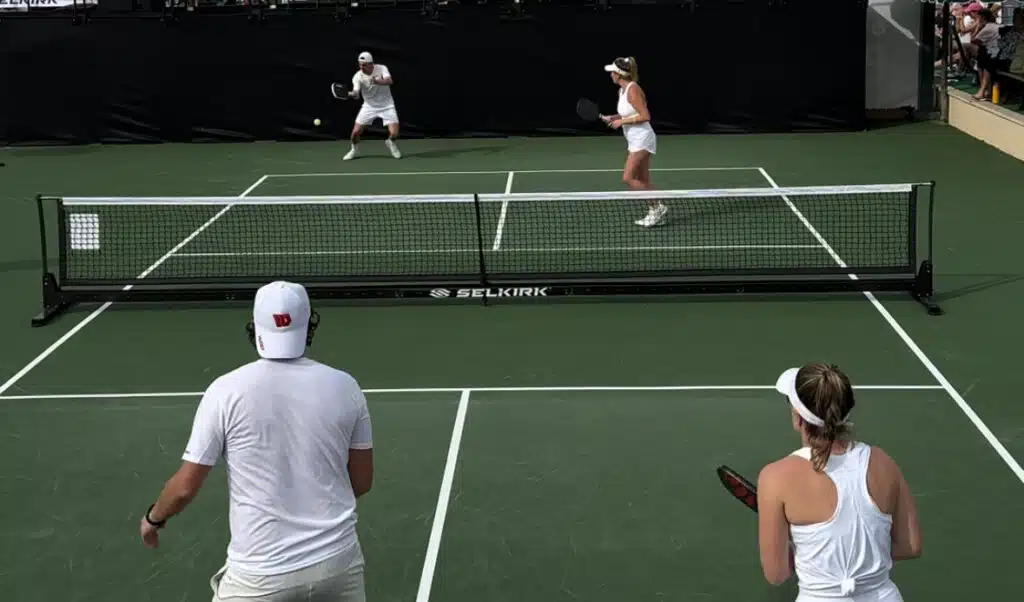
Pre-Serve Routine
A consistent pre-serve routine is like a mental trigger that prepares you both physically and mentally for the serve. Imagine it as the process of winding up a spring before releasing its energy. This routine helps you stay focused and establishes a rhythm, which is crucial for consistency.
- Clear Your Mind: Take a few deep breaths to clear any distractions. Visualization can also help; picture the serve you are about to make.
- Ball Position Check: Ensure the ball is in the correct hand if you’re opting for a traditional toss, or positioned correctly if you prefer a drop serve.
- Adjust Your Grip and Foot Placement: Recheck your grip and foot placement to ensure everything is aligned.
- Practice Swings: Take a couple of practice swings to familiarize yourself with the motion you’re about to perform.
Stance and Body Positioning
A proper stance and correct body positioning act as the building blocks for an effective serve. Picture your body as a finely tuned machine every part must work in harmony to produce the desired outcome.
- Side-On Position: Stand with your feet shoulder-width apart and position your body sideways to the net, which facilitates a natural, underhand swing.
- Weight Distribution: Distribute your weight evenly on both feet but slightly favor your back foot. This balanced position prepares you for a smooth weight transfer as you swing.
- Flexibility in Knees: Keep your knees slightly bent to allow flexibility and better movement during the serve.
Tossing Techniques
The toss (or drop) is a vital aspect of your serve that greatly affects its consistency and outcome. It’s similar to setting up a bowling pin; the better it’s positioned, the easier it is to knock down.
- Consistency in Toss Height: Aim to toss or drop the ball to a consistent height just above your waist. A controlled, low toss minimizes errors.
- Controlled Release: Release the ball from your non-dominant hand smoothly and in front of you, ensuring it aligns with your intended serve path.
- Eyes on the Ball: Keep your eyes focused on the ball from the moment it’s tossed to the point of contact with the paddle. This focus reduces the likelihood of mistimed swings.
Mastering Different Types of Serves
Underhand Serve
The underhand serve is the most basic yet essential serve in pickleball. If we liken pickleball to a symphony, the underhand serve forms the foundation upon which all other variations are built.
- Setup: Position yourself in a side stance, with the paddle in a relaxed continental grip.
- Swing Path: Follow a smooth, pendulum-like motion using primarily your shoulder and forearm. Make contact with the ball below waist level.
- Aiming and Placement: Aim for deep corners of the service box to limit your opponent’s options. Consistency is more critical here than power.
Topspin Serve
The topspin serve is a more advanced technique that adds an extra dimension to your game, akin to adding spice to an already delicious recipe.
- Grip and Stance: Use a continental or eastern forehand grip. Your stance should remain side-on to the net.
- Swing Mechanics: Brush upwards against the back of the ball during your swing, imparting topspin. This makes the ball dip sharply after the bounce, complicating the return.
- Practice Routine: Spend time practicing the topspin motion to get accustomed to the ball’s unpredictable trajectory and bounce.
Slice or Cut Serve
The slice serve can be incredibly disruptive to opponents, much like a curveball in baseball.
- Grip and Setup: A continental grip works best here. Stand slightly closer to the sideline to maximize the slice effect.
- Swing Path: Aim to cut across the ball’s side during your swing. This imparts a side spin, causing the ball to curve away from the opponent.
- Target Areas: Aim for the wide service box corners, making it difficult for your opponent to predict the ball’s path.
Lob Serve
The lob serve is ideal for changing the tempo of the game and catching opponents off-guard.
- Preparation: Use a continental grip and a moderately relaxed stance.
- Execution: Swing with a higher, more extended motion to send the ball high into the air. The aim is to land it deep within your opponent’s court.
- Positional Awareness: Ensure the ball’s trajectory is high enough to clear the net comfortably, but deep enough to push your opponent towards the baseline.
Drive Serve
The drive serve is your weapon for aggressive play, similar to a fast serve in tennis.
- Grip and Stance: A firm eastern forehand grip is recommended. Stand with slightly more weight on your back foot.
- Power Generation: Use explosive leg and core strength to generate power. Swing in a low-to-high motion, making sure to follow through towards the net.
- Accuracy: Target specific spots in the opponent’s service box, not just to overpower but also to strategically place the ball.
Key Techniques for a Successful Serve

Balance and Weight Distribution
Balance and weight distribution in your serve can be compared to a well-balanced scale. If one end tips too much, the balance is compromised. Properly distributing your weight ensures stability and power.
- Initial Setup: Distribute weight evenly between both feet, with a slight preference for your back foot.
- Weight Transfer: As you swing, smoothly transition your weight from the back foot to the front foot. This transfer helps generate power and keeps your serve controlled.
- Post-Serve Positioning: Maintain balance post-serve to quickly transition into a ready position, prepared for the return shot.
Arm and Paddle Movement
Effective arm and paddle movement during the serve are akin to the precise, controlled movements of a painter’s brushstroke. Every detail matters.
- Controlled Arm Motion: Emphasize a smooth, continuous arm motion originating from the shoulder. This minimizes erratic movements.
- Paddle Position: Keep the paddle face at a slight angle to control the ball’s spin and direction.
- Wrist Flexibility: Keep your wrist flexible but not floppy. The correct positioning helps in generating the desired spin and power while maintaining control.
Follow-Through Importance
The follow-through is as essential as the initial swing, comparable to how a musician completes a note to ensure the melody flows seamlessly.
- Complete the Motion: Extend your arm fully towards the target area after making contact. This helps in maintaining the direction and power of the serve.
- Shoulder Rotation: Allow your shoulder to follow through naturally, maintaining a fluid motion from start to finish.
- Balance Check: Ensure that your body remains balanced throughout the follow-through to avoid stumbling and prepare for the next shot.
Serving Strategies to Outplay Opponents
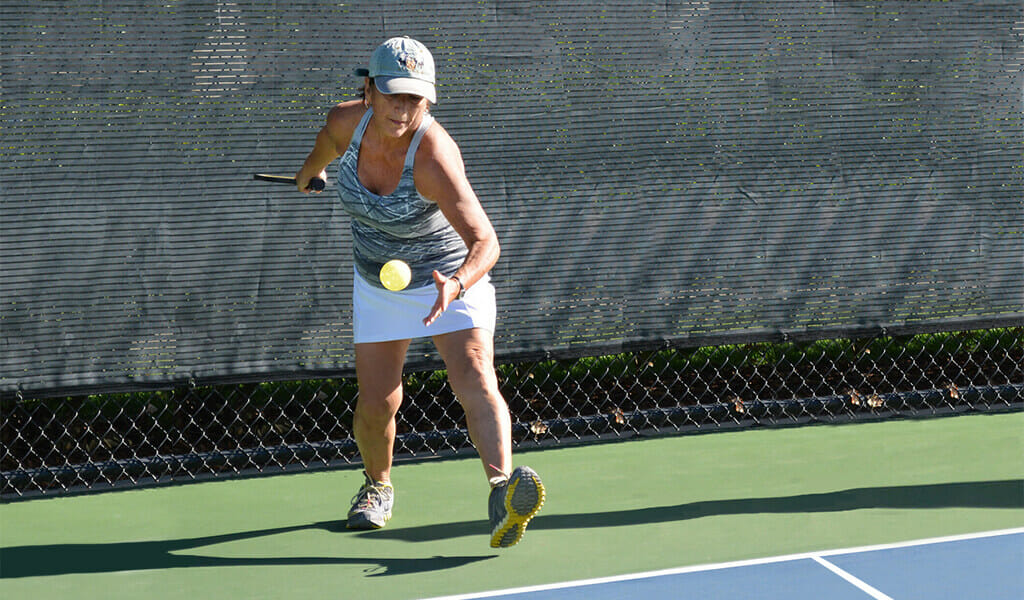
Targeting Weaknesses: Deep vs. Short Serves
Understanding your opponent’s weaknesses is akin to knowing your adversary’s moves in a chess game. Recognize their weak spots and tailor your serves to exploit them.
- Deep Serves: Serving deep pushes your opponent back and limits their attacking options. Aim for the back corners or edges of the service box.
- Short Serves: Utilize short serves if your opponent struggles with agility or reaching low balls. This can make them commit errors or pop up easy returns.
- Mixing Deep and Short: Alternating between deep and short serves keeps your opponent guessing, reducing their ability to anticipate and respond effectively.
Mixing Up Your Serves
Variety is the spice of life and serves no less in pickleball. Mixing up your serves ensures that your opponent remains off balance and is less likely to predict your next move.
- Changing Speeds: Alternate between fast drive serves and slower lob serves to disrupt your opponent’s rhythm.
- Varying Spin: Introduce different spins like topspin, slice, and no-spin serves to keep the opponent guessing.
- Randomized Placement: Aim for different parts of the service box to keep your opponent moving and guessing.
Serving to Backhands vs. Forehands
A well-placed serve targeting an opponent’s weaker backhand can tilt the game in your favor, much like exploiting a known weak link in a chain.
- Backhand Advantage: Most players have a weaker backhand compared to their forehand. Serving to their backhand side forces them into a defensive position.
- Forehand Feints: Occasionally serving to the forehand can keep them honest and prevent them from fully anticipating backhand-targeted serves.
- Switching Sides: Assess your opponent during warm-ups or the initial rallies to understand their weaknesses and adjust your serving strategy accordingly.
Improving Serve Consistency
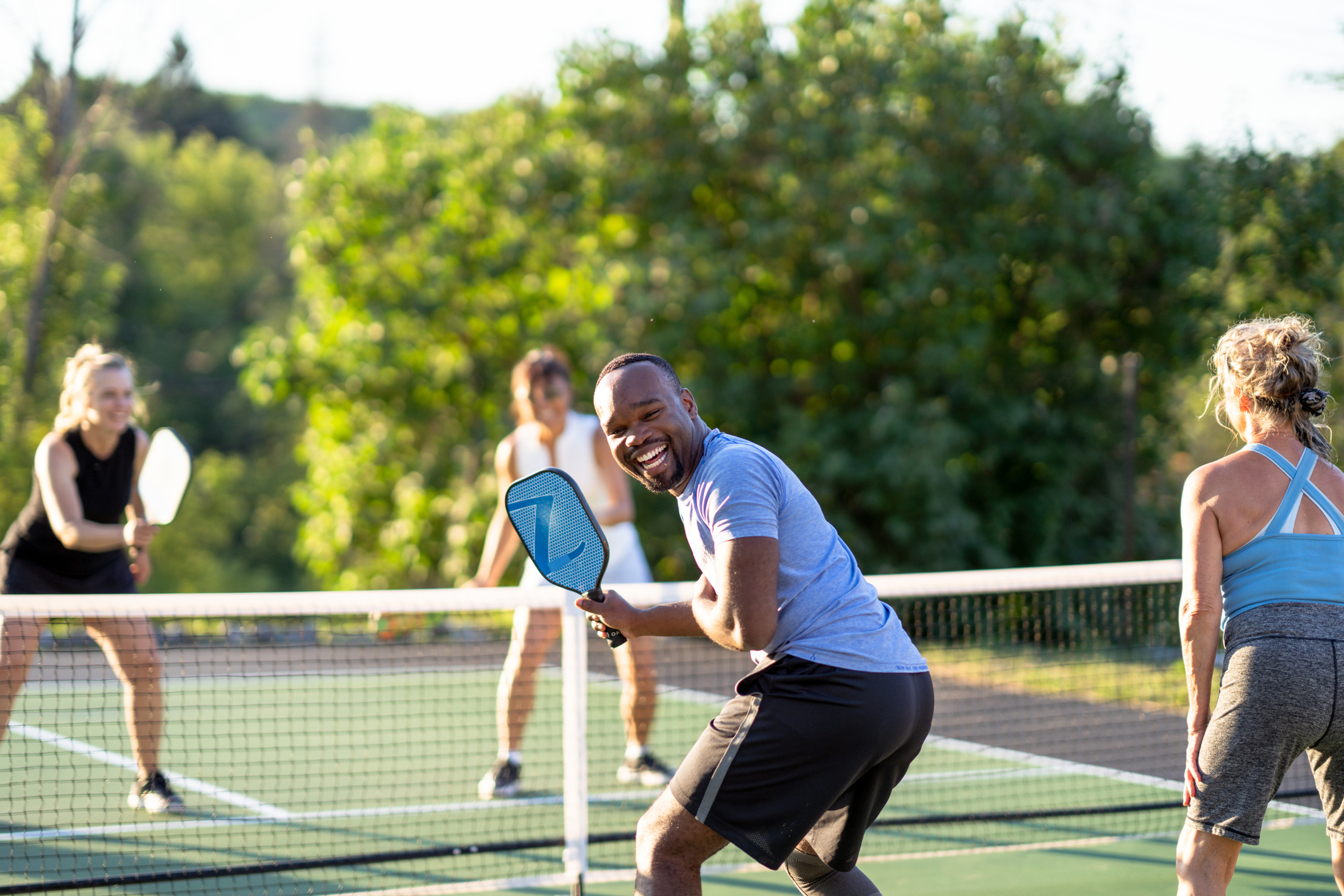
Practicing Your Toss Height
The toss is the cornerstone of a consistent serve, much like a good foundation is critical for a stable building.
- Consistent Toss Height: Ensure that your toss height remains consistent. A low, controlled toss prevents erratic serves.
- Position and Control: Toss the ball in front of your body, keeping it aligned with your intended swing path. This alignment helps in making consistent contact.
Watching the Ball During Contact
Keeping your eyes on the ball is a straightforward yet often overlooked technique comparable to how an artist remains focused on their canvas to create a masterpiece.
- Locked Gaze: From the toss to the point of contact, keep your eyes focused on the ball. This focus ensures that you make accurate and consistent contact.
- Follow-Through Vision: Even while following through, keep your eyes on the target area to maintain control over the ball’s direction and spin.
Practicing Under Pressure
Creating game-like pressure situations in practice can simulate the high-stress environment of a match, much like training simulations prepare professionals for real-world events.
- Set Goals: Incorporate specific targets and goals in your practice sessions. Aim to land a certain number of serves in a designated area.
- Timed Drills: Use a timer to add pressure, forcing yourself to serve accurately within a limited timeframe.
- Competitive Practice: Engage in practice matches or drills with a partner to recreate competitive scenarios, making you accustomed to performing under pressure.
Analyzing Common Serving Mistakes
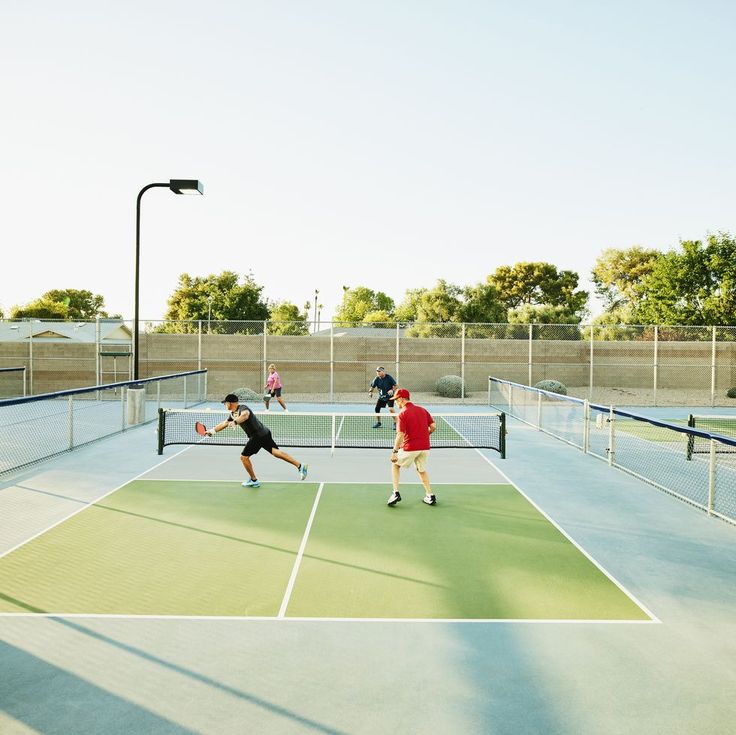
Over-Rotating on Your Serve
Over-rotating during a serve is like attempting to strike a balance beam while spinning too fast; you lose control and stability.
- Stance and Setup: Ensure that your stance is semi-closed, preventing excessive body rotation.
- Controlled Motion: Focus on a controlled, pendulum-like swing, using your shoulder for most of the motion.
- Balance Maintenance: Keep your weight balanced and avoid unnecessary movements to maintain control over your swing.
Incorrect Contact Points
Making contact with the ball at incorrect points on the paddle is akin to hitting a tennis ball with the frame; it lacks control and precision.
- Ideal Contact Area: Aim to hit the ball at the center of the paddle, known as the “sweet spot,” for maximum control and power.
- Consistent Practice: Practice making contact with the paddle’s sweet spot during each serve to build muscle memory.
Tension in Your Grip and Body
Tension in your grip and body is like trying to dance with stiff limbs; it restricts movement and fluidity.
- Relaxed Grip: Maintain a relaxed grip on the paddle to allow for wrist flexibility, enhancing control and accuracy.
- Flexible Posture: Keep your body relaxed and fluid. Tension can lead to jerky, inconsistent serves.
- Breathing Exercises: Incorporate deep breathing techniques before serving to release tension and promote relaxation.
Mental Preparation for Serving

Building Confidence
Confidence is the bedrock of consistent serving, akin to having a sturdy foundation for a skyscraper.
- Positive Visualization: Regularly visualize successful serves to build a positive mindset.
- Incremental Goals: Set achievable goals during practice sessions, gradually increasing their complexity to build confidence in your abilities.
Focusing on Your Target
Focusing on your target is like aiming a bow and arrow; precision and concentration are key.
- Pre-Serve Routine: Develop a pre-serve routine that includes visualizing your target area.
- Sharp Focus: As you serve, maintain a sharp focus on the target, reducing the likelihood of errors.
Calmness and Relaxation Techniques
Staying calm and relaxed during serving is crucial, much like a swimmer maintaining a smooth and steady stroke to glide effectively through water.
- Breathing Exercises: Incorporate deep breathing techniques to calm nerves and maintain composure.
- Mental Rehearsal: Mentally rehearse your serve to build a sense of calm and preparedness.
FAQs
How Do I Get Better at Pickleball Serve?
To improve your pickleball serve, practice regularly. Focus on technique, explore different serve types, and build power using weight transfer. Develop a pre-serve routine to boost focus. Remember, consistency and precision are key.
How to Hit Topspin Pickleball Serve?
To hit a topspin serve in pickleball, start with a continental grip. Brush up the back of the ball slightly and aim for the 1 o’clock position. Use a consistent toss and practice often. This technique adds a unique spin that can disrupt your opponent’s timing.
What 2 Things Should the Server Do Before Serving Pickleball?
Before serving in pickleball, you should establish a consistent pre-serve routine and focus on your breathing. It’s also helpful to check your opponents’ positions and visualize your intended serve placement. Stay calm, focused, and confident.
How to Curve Pickleball Serve?
To curve a pickleball serve, use a slice technique. Hold the paddle with a continental grip and cut across the ball’s side during your swing. This imparts a side spin, causing the ball to curve away from the opponent. Practice this motion to master the curve serve.
Conclusion
To summarize, mastering the pickleball serve is crucial for elevating your game. The key is to understand the basic serve rules, develop a consistent serving motion, and explore different serve variations.
Consistent technique is vital – maintain a relaxed grip, use your shoulder for power, and follow through the swing. Incorporate the drop serve, which can catch opponents off guard with its low trajectory and spin.
To generate more power, utilize your legs and core, not just your arm. Precise serve placement is also important – aim for the corners or target your opponent’s weaker side to disrupt their strategy.
Develop a pre-serve routine to help you stay focused and confident. Ultimately, the key is to practice regularly, experiment with different serves, and keep your opponents guessing.
With dedication and the right techniques, you can transform your pickleball serve into a powerful weapon that gives you a competitive edge on the court.
